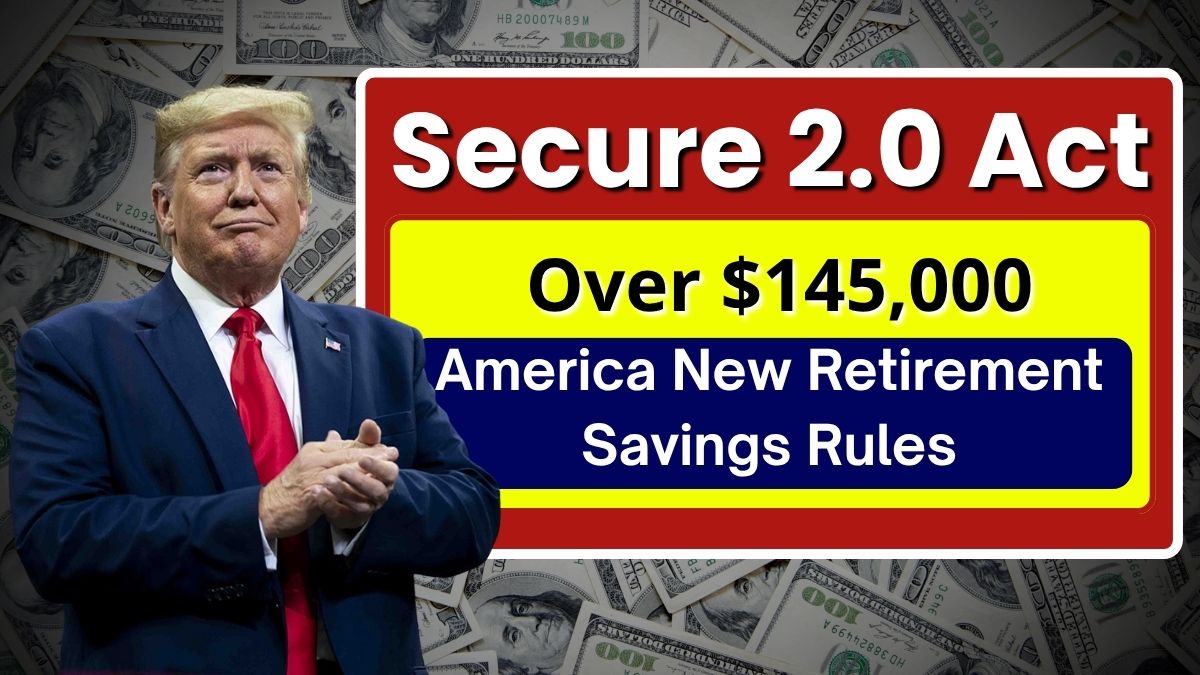The Secure 2.0 Act, passed in 2022, is finally bringing a wave of new rules in 2025 and 2026 that will affect how millions of Americans save, withdraw, and plan for their future.
Whether you’re in your 20s just starting your 401(k) or in your 60s planning to retire soon, these changes could directly influence your financial freedom. Let’s break down what’s coming — and why it matters to you.
1. Roth Catch-Up Rule for High Earners (2026)
Starting January 2026, workers aged 50 or older who earn over $145,000 must make their catch-up contributions to a Roth 401(k) (after-tax), instead of a traditional pre-tax plan.
This move shifts more high-income earners into post-tax saving, meaning you’ll pay taxes now but enjoy tax-free withdrawals later in retirement.
Tip: If your employer doesn’t offer a Roth option yet, ask HR early — you could lose your catch-up benefit in 2026 if the plan isn’t updated.
2. Bigger Catch-Up Contributions for Ages 60–63 (2025)
If you’re between 60 and 63, you’ll soon be allowed to supercharge your retirement savings. Beginning in 2025, your catch-up limit jumps to $10,000 or 150% of the standard limit (whichever is higher).
That gives near-retirees a final window to pad their nest eggs — a powerful opportunity if you’re trying to make up for lost time.
3. New Emergency Savings Option in 401(k)s (2025)
Emergencies happen — and soon, 401(k) plans will help you handle them better.
Starting 2025, employers can add a small emergency savings account within your 401(k). You can save up to $2,500 after tax, with four penalty-free withdrawals per year.
It’s a safety net for unexpected bills without derailing your long-term retirement goals.
4. Student Loan Matching Contributions (2025)
Juggling student debt and saving for retirement? The Secure 2.0 Act gets it.
From 2025, employers can match your student loan payments as if you contributed to your 401(k). That means you can still build retirement savings — even if your paycheck mostly goes toward debt.
5. Automatic Enrollment for New Plans (2025)
New 401(k) plans starting after December 2024 will automatically enroll employees at a 3% contribution rate, increasing 1% each year up to at least 10%.
This makes saving effortless for new workers — no forms, no confusion, just automatic financial progress.
6. Easier Required Minimum Distributions (RMDs)
The age to start withdrawing from retirement accounts has already moved to 73, and will rise again to 75 in 2033. Plus, the penalty for missing an RMD is now far lower — reduced from 50% to 25% (or even 10% if corrected quickly).
That means more flexibility and fewer costly mistakes for retirees.
Why These Changes Matter
Think about it this way: the Secure 2.0 Act gives savers more control, more time, and more flexibility. Whether you’re trying to catch up, manage debt, or prepare for life’s surprises, these updates are built to meet real-life needs — not just financial theory.
Employers, too, are updating systems and plan documents right now. So if you’re working, stay informed and review your benefits in early 2025 to make sure you’re taking full advantage of these new opportunities.
Frequently Asked Questions
1. Do these changes apply to all retirement plans?
Most rules apply to employer-sponsored plans like 401(k)s, but some — like RMD updates — also impact IRAs and self-employed plans.
2. Will I lose my catch-up contribution if my employer doesn’t have a Roth option?
Yes, unless your plan adds one by 2026. Talk to your HR department before the new rule takes effect.
3. Can I still have both a Roth IRA and a 401(k) emergency savings account?
Absolutely. They’re separate accounts with different limits and tax rules.
